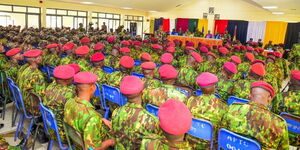To frequent fliers, it is highly likely that you have noticed that during take-offs, planes take quite some time to reach their cruising altitude.
Typically, the common cruising altitude for most commercial aeroplanes is between 33,000 and 42,000 feet, or between about 9km and 12km above sea level.
On average, an aircraft flies at an altitude of between 35,000 and 36,000 feet in the air.
Passenger aeroplanes have such a high cruising altitude due to the high levels of fuel efficiency they achieve at that level.
At high altitudes, aircraft fuel burn is much less per mile travelled when compared to low-level flights because of the reduced aerodynamic drag and improved jet engine efficiency.
This means a jet aeroplane can fly much faster whilst using less fuel at a high altitude.
Furthermore, altitude is related to air pressure, and pilots measure it using altimeters. In this regard, the higher you get, the lower the pressure is. This happens for two reasons:
- The earth's gravity pulls air as close to the earth's surface as possible.
- The higher you get, the number of gas molecules in the air decreases, which means that nitrogen, oxygen, and carbon dioxide have less chance of bumping into each other and is something mountain climbers refer to as "thin air."
A decreased air pressure also means less oxygen in the air available for breathing which is why aircrafts are pressurised to make up for the lack of air pressure at high altitudes.
Additionally, modern jet-powered airliners are most efficient when used at high altitudes.
Jet engines are also more efficient when operating at their maximum revolutions per minute (RPM), or exhaust temperature limits.
The higher you go, the less dense the air, which means less friction or drag on the plane. At high altitudes, less thrust is needed to propel the aircraft.
This is called resistance “drag” which means that less thrust is needed from the engines to propel the aircraft through the air effectively making the aircraft fly faster for the same high (and therefore efficient) thrust setting.
However, not all planes are made to cruise at the same altitude. A plane's altitude is determined by its current weight and the atmospheric conditions at the time of flight.
Equally, a flight's direction, the amount of turbulence and flight duration are also factors that determine how high a pilot can fly an aeroplane.












